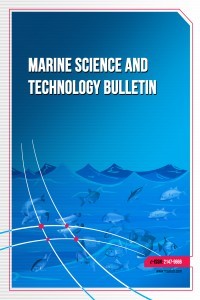
Marine Science and Technology Bulletin
Yazarlar: Muammer KIRICI, Mahinur KIRICI, Muhammed ATAMANALP, Şükrü BEYDEMİR
Konular:Temel Bilimler
DOI:10.33714/masteb.769454
Anahtar Kelimeler:Glutathione reductase,Metal toxicity,Capoeta umbla,Enzyme inhibition
Özet: The aim of this study was to determine the in vitro inhibitory effects of some metal ions (silver ion (Ag+), cadmium ion (Cd2+), cobalt ion (Co2+), copper ion (Cu2+), nickel ion (Ni2+), lead ion (Pb2+) and zinc ion (Zn2+)) on glutathione reductase (GR) enzyme activities that purified from the gill, kidney and liver tissues of Capoeta umbla. For this purpose, the enzyme was purified from the gill, kidney and liver of C. umbla freshwater fish using ammonium sulfate precipitation and affinity column chromatography methods using 2′,5′-ADP Sepharose 4B. Within this study, the GR enzyme was purified for the first time from the tissues of C. umbla. Enzyme purity and molecular weight were determined using the sodium dodecyl sulfate polyacrylamide gel electrophoresis method. In addition, the inhibitory effects of different metal ions (Ag+, Cd2+, Co2+, Cu2+, Ni2+, Pb2+ and Zn2+) on GR enzyme activities of the gill, kidney and liver tissue of C. umbla were investigated under in vitro conditions. The metal ion concentrations inhibiting 50% of enzyme activity (IC50) were obtained by plotting activity percentage versus [I] figures. Finally, the dissociation constants of the enzyme inhibitor complex (Ki), and the inhibition types, were calculated from Lineweaver–Burk plots. In vitro inhibition rank order was determined as Ag+>Co2+>Pb2+>Zn2+>Cu2+ for C. umbla gill GR; Ag+>Pb2+>Co2+> Ni2+>Zn2+ for C. umbla liver GR; Ag+>Cu2+>Co2+>Pb2+>Ni2+ for C. umbla kidney GR. From these results, we showed that Ag+ metal ion is the most potent inhibitor of GR enzyme on gill, liver and kidney tissues. Our results also demonstrate that these metals might be dangerous at low micromolar concentrations for C. umbla GR enzyme.